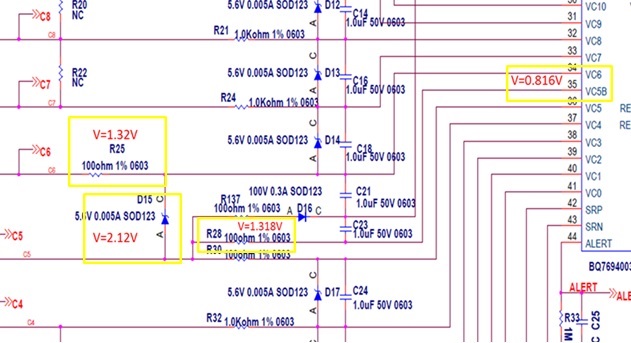Other Parts Discussed in Thread: BQ76940,
Hi,
While testing in production line, there some samples failed because of cell 6 no voltage after short circuit testing(P+ short to GND)
Form tool below can see Cell 6= 0.816V , Cell7=3.76V...etc., and the real measurement at battery side is 3.58V
What customer had measured are:
R25= 1.32V, R28=1.318V ,D15=2.12V and VC5B-VC6 = 0.816V

Now customer suspect that IC is damaged, everything is okey after change IC.
Please help to check that if anything need to be modified on the schematic for this issue.
(After chang R28/R30/R25/R137 the result is the same)
Thank you.
BTW, is there any effect that plus in each cell by different sequence? (cell1>cell2>... or randomly)
Schematic attached below:


